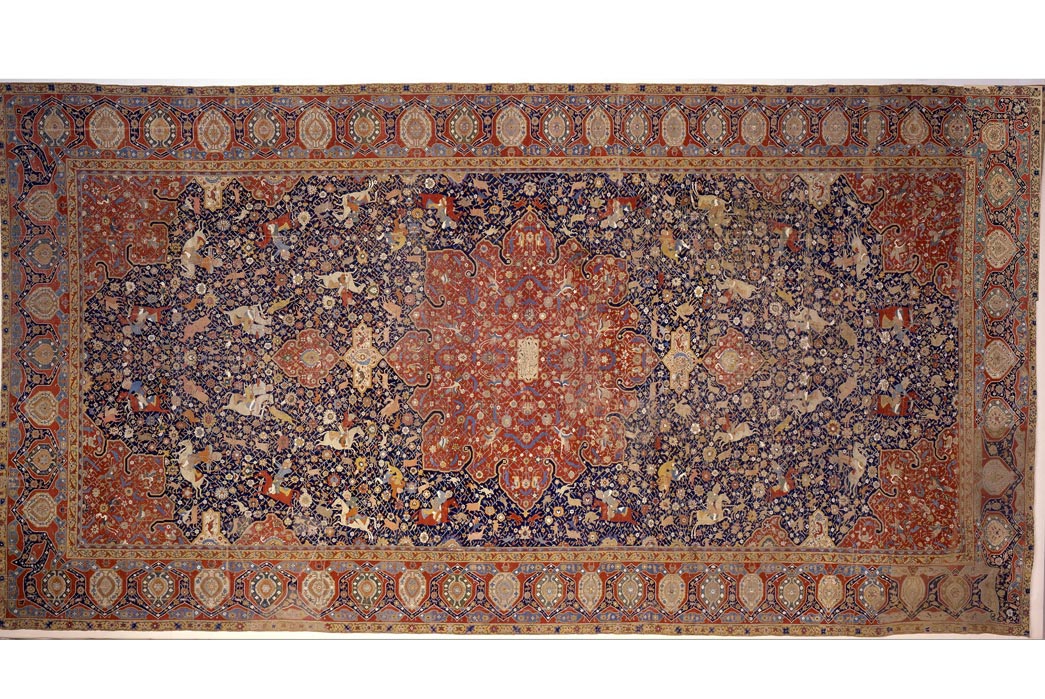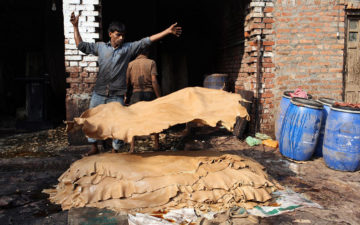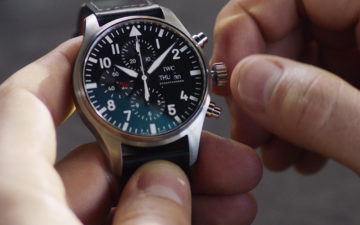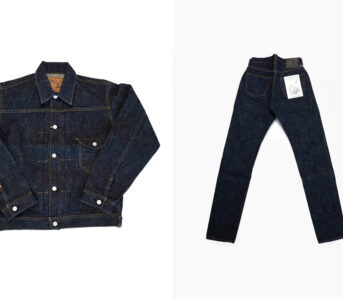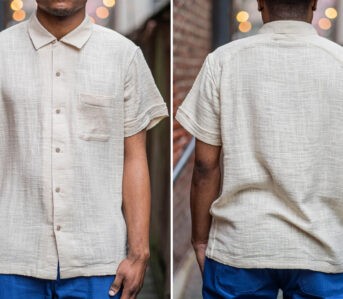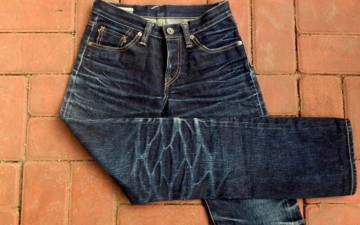On the second floor of the Metropolitan Museum of Art in New York City, living one wing over from European painters like Dutch Masters and the Impressionists, you’ll find a collection of Persian rugs. At first glance, they may look like the same floor decorations commonly found everywhere from recording studios to boutique clothing shops. Look a little closer and you’ll find a much higher level of detail and craftsmanship than anything you’ve ever stepped on.
The Persian rugs on display at the Met are truly works of art. They represent the impressive mastery that was required to create astounding detail by weaving textiles. As representatives of the art form at its highest level, these particular examples are made from silk, and some of them even contain precious metals as they were created for nobles and royalty. For the most part, Persian rugs were made from wool and cotton and decorated the homes and public spaces of the common people.
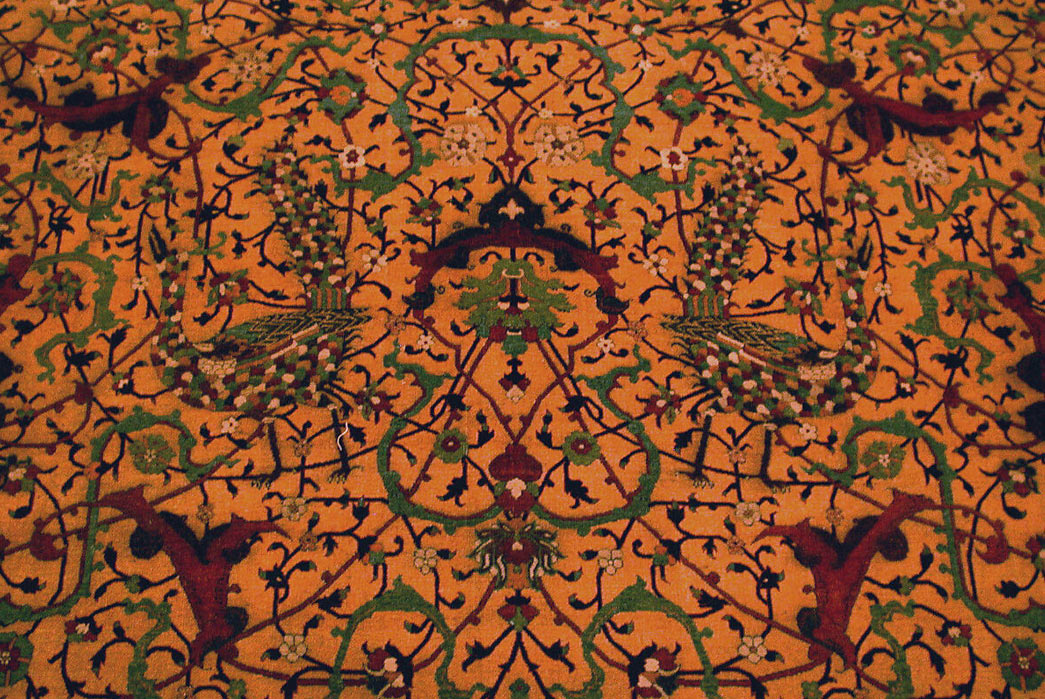
Details of a 17th-century Persian rug. Image via The Met.
All of the examples displayed in the Met are from the 16th and 17th centuries which are considered to be the golden age of Persian rugs. But how regional rug-making traditions evolved over thousands of years to reach this high point is a remarkable story of human artistic endeavor. How the designs created in 16th century Persia became a fundamental piece of Western interior design by way of 19th century England is a remarkable story of cultural exchange. While that story, unfortunately, begins with colonial raiding, it has the happy ending of keeping this remarkable art form alive and thriving through global demand.
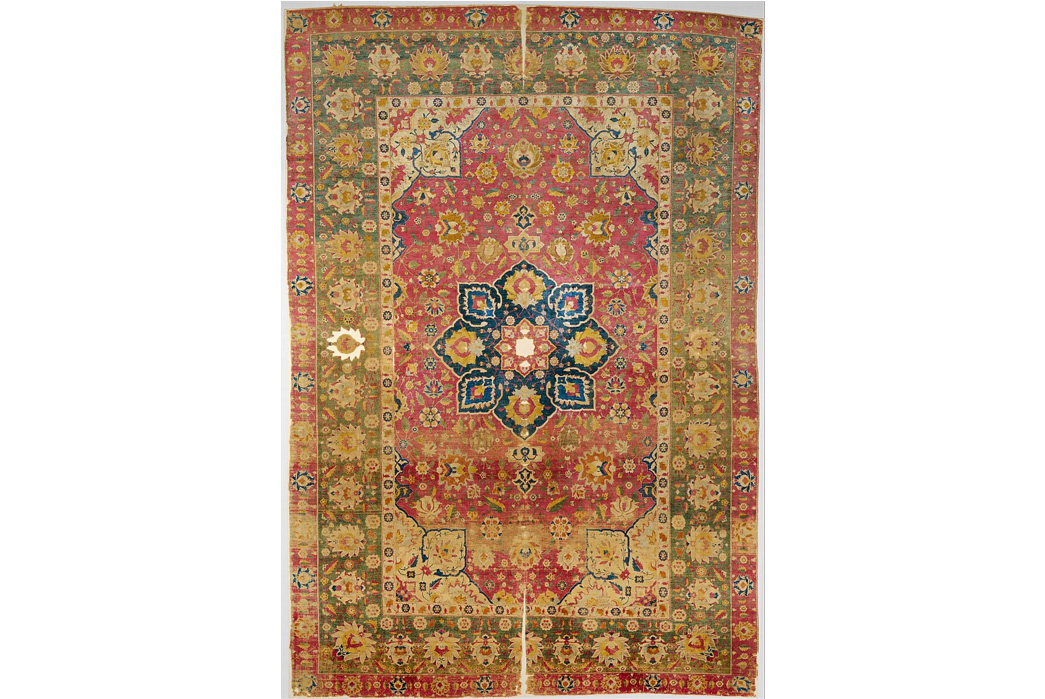
A 16th-century Persian rug. Image via The Met.
What is a Persian Rug?
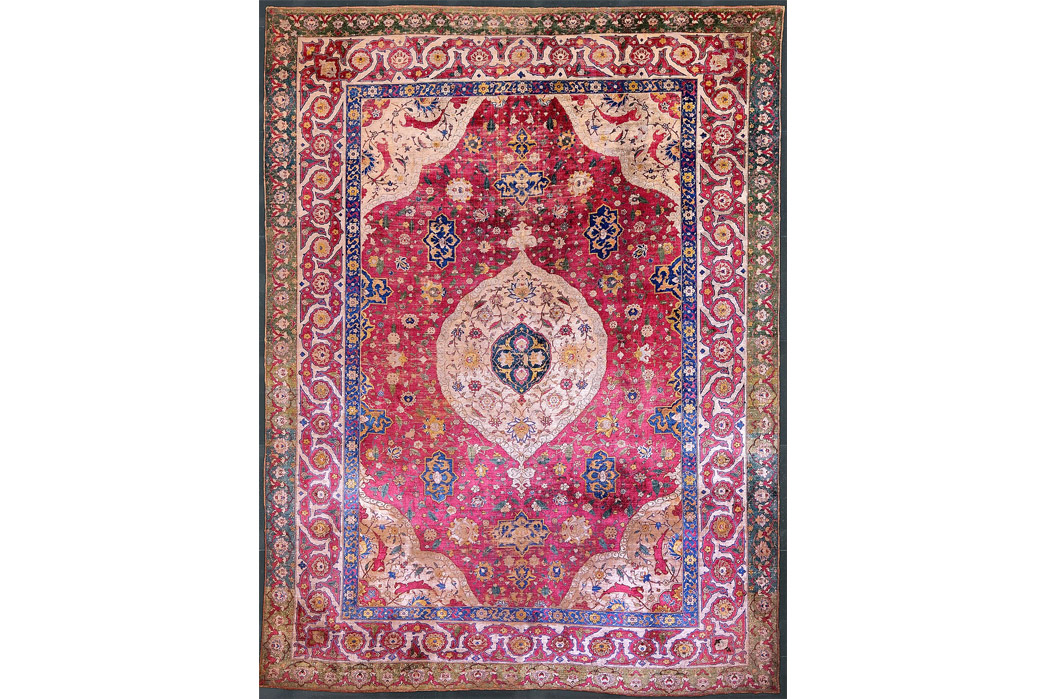
A carpet from the Rothchild Collection on display at the Museum of Islamic art in Qatar. Image via Wikipedia.
Persian rugs are a sub-category of Oriental rugs. Although the two terms are often used interchangeably, there are distinctions that separate Persian designs from other styles of Oriental rugs. Oriental rugs are characterized by specific design elements that include a multi-layered border – often a broader main border flanked by two much narrower borders – and a field which is the central area that includes repeating and symmetrical patterns.
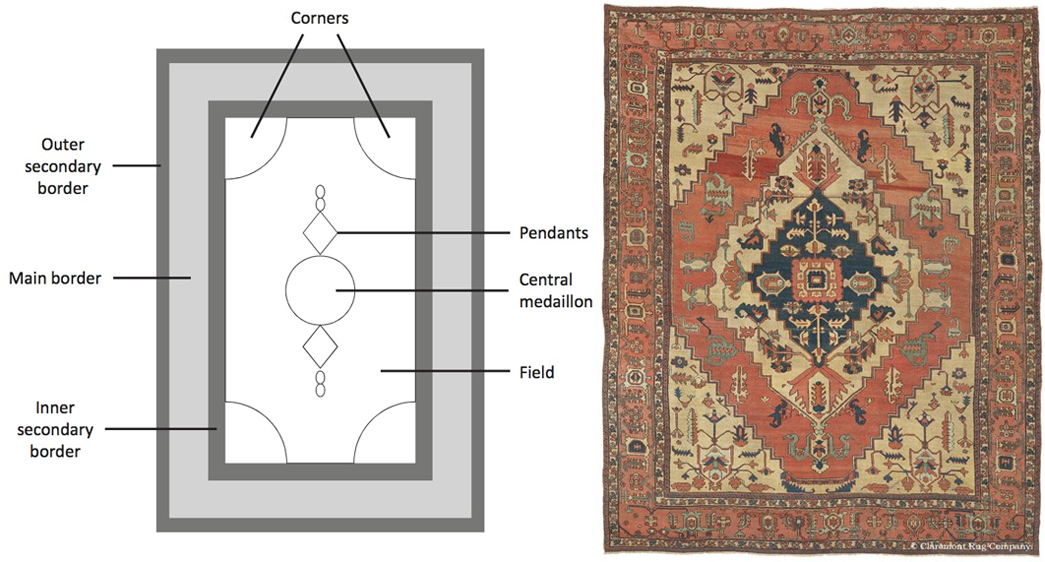
Left: A diagram of the basic layout for a Persian rug Image via Wikipedia. Right: A Seapi-style Persian Rug made in 1875. Image via Wikipedia.
The content of the field differentiates Persian rugs from other styles of Oriental rugs. Oriental rugs can feature a vast array of designs within the field: ranging from geometric patterns to wild animals on the hunt, or even historical events. Persian fields feature a central design, known as a medallion, from which the rest of the design radiates. Part of this radiating pattern often features corner designs that either repeat or are variations of the central medallion.
As far as the historical record shows, this basic template became fashionable during the 16th-century golden age of Persian rugs and has stood as the defining characteristic of the medium ever since. Within this template, you can find a wide range of design elements. Both the field and the border most often contain geometric and floral designs. Though you can also find artistic representations of animals, people, and places. Regardless of the content of the field, symmetry is the other fundamental attribute of Persian rug design.
Symmetry in All Things
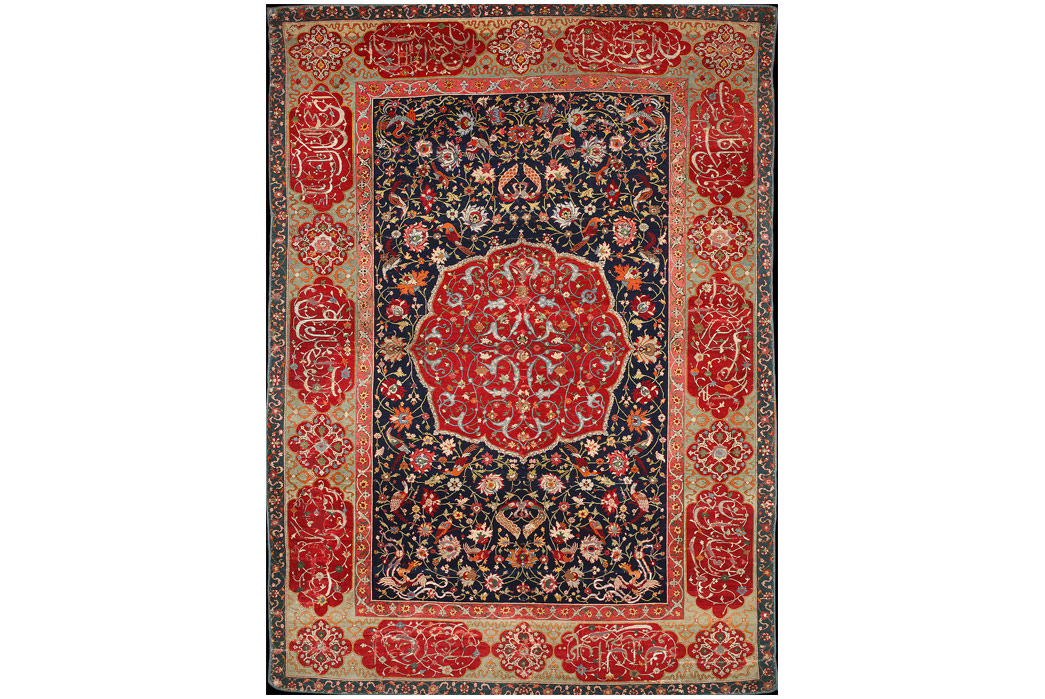
A wool, silk, and metal thread rug from the early Safavid period, circa 1600. Image via Wikipedia.
Persian rugs as we know them represent a combination of three rich cultural traditions during the late 15th and early 16th centuries in what is modern-day Iran. Rug-making traditions that went back to at least 200 BC (and were probably far older), combined with the artistic aesthetic of the Byzantine Empire, and the philosophical ideals of Islam. These three cultural forces – one very old, one king-of-old, and one relatively new – commingled in a way that has occurred many times throughout history, always manifesting a new artistic expression.
A rug found in a grave dating from around 400 BC is the oldest example displaying the basic border and field layout ever found. However, the level of craftsmanship displayed by this rug suggests that the design probably existed for generations before it was created. This tradition carried on throughout central Asia into the Islamic period when a new artistic tradition arose focused on balance and freeflow, cyclical design. It first appeared in calligraphy and painting before entering textiles.
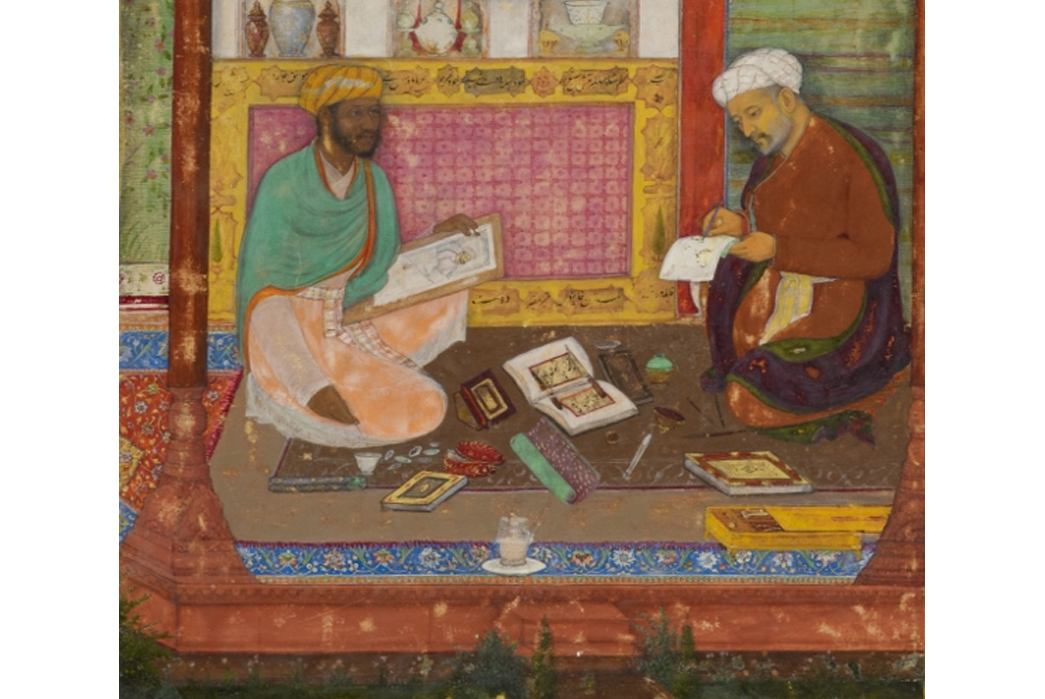
The Pazyryk carpet is the oldest intact carpet ever found, dating from circa 400 BC. Image via Wikipedia.
The border, field, and medallion aspects of Persian rugs are always laid out on a perpendicular axis like a piece of graph paper. This balance and symmetry became the defining characteristic of the Safavid Period, named after the Safavid Dynasty that ruled Persia from 1501 to 1763. Therefore, the primary style of Persian rug that we see today is inspired by the Safavid style.
The Design Revolution
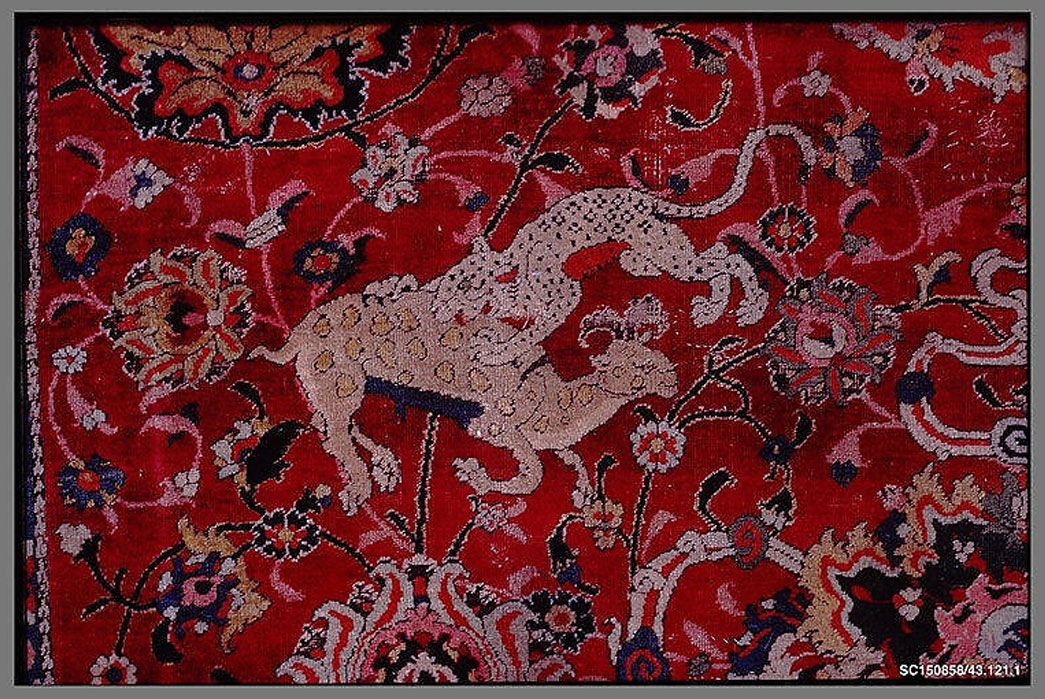
Detail of a 16th-century rug from the Safavid royal court. Image via The Met.
In 1453, the Ottoman Empire conquered Constantinople and opened up a gradual flow of Byzantine artistic motifs into the Islamic world. This coincided with an advancement in civil and political organization after Shah Ismail I united the Persian people for the first time in centuries. For the first time, Persian carpet weaving transitioned from small looms operated by individuals into large-scale projects incorporating multiple artists and artisans to create enormous, intricately detailed rugs.
Historians refer to this transition as the “design revolution” as rug production took on an organized multi-step process akin to English garment manufacturing during the Industrial Revolution 300 years later. Specialists took over each step of the process. Artists designed the patterns which were transferred to weavers who produced the rugs. Unfortunately, exactly how this transfer took place has been lost to history. Paintings exist of the original designs, as do the large-scale rugs that resulted from them, but documentation of the in-between steps has not been found.
Centralized production also allowed for much larger rugs to be produced at a much faster pace while still resulting in an enormous leap in artistry. During the “design revolution,” rugs went from big enough for a single person to sit on to big enough to cover the floor or wall of an entire room. They became symbols of wealth, as bigger and more intricate rugs started featuring silks and precious metals. Royal palaces, mosques, and homes of dignitaries and the wealthy were covered in rugs.
The World, By Way of Britain
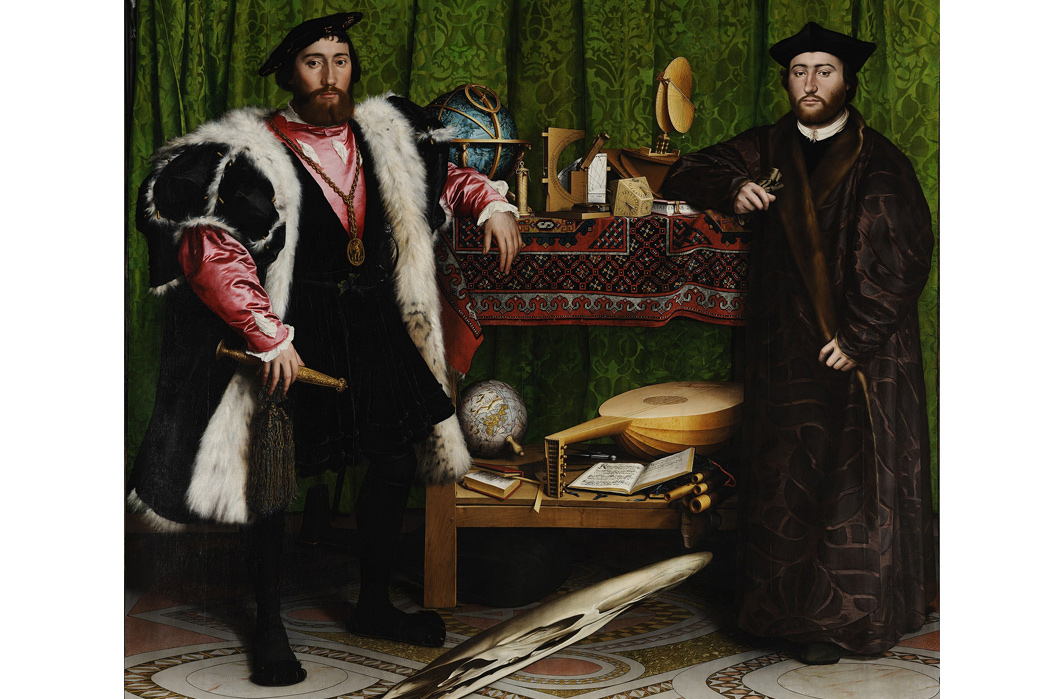
The Ambassadors by Hans Holbein, painted in 1533, depicts a Persian rug in England. Image via Wikipedia.
Historical records, personal accounts, and paintings show that Persian rugs were important to Europe beginning in the Middle Ages. They were rare and very expensive decorations for the wealthy, often displayed alongside European tapestries. Due to their role as a status symbol for the wealthy, they appear in several Renaissance portraits. Their popularity in Europe spiked during the Renaissance, thanks to Italian merchants providing a steady supply to the continent for the first time, then fell during the seventeenth and eighteenth centuries.
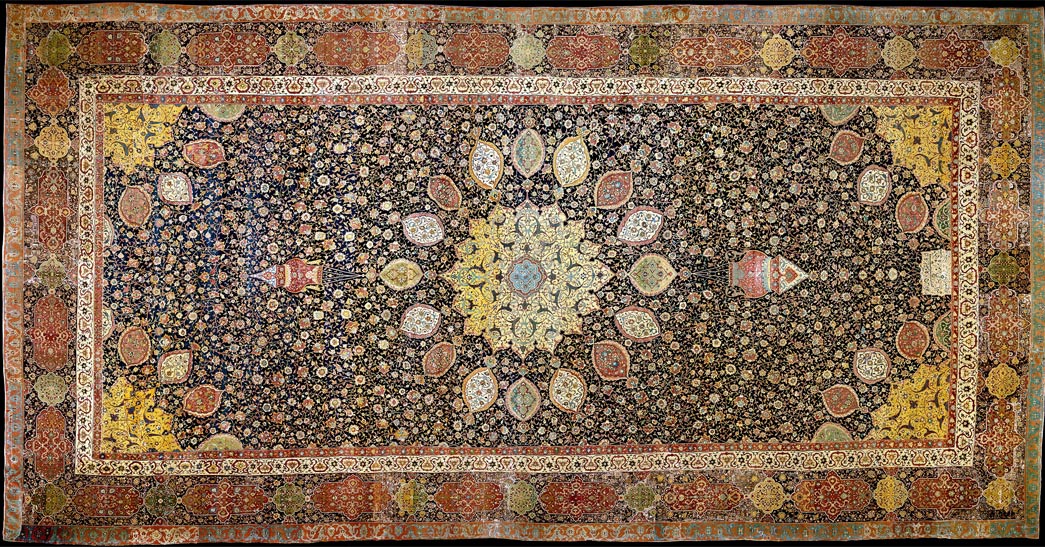
The Ardabil Carpet, now on display at the Victoria and Albert Museum in London. Image via Wikipedia.
The beloved place that Persian rugs hold in modern Western interior decorating can be traced back to a few fanatics in nineteenth-century England. During the height of the British Empire, the British had a sizable foothold in the Middle East. As they did with all of their colonies, the British loved to absorb cultural artifacts as their own. The intense beauty, masterful artistry, and attention to snaring detail of Persian rugs caught on with the British upper class after one particularly large example was bought by a London museum for an astronomical price.
In 1893, English artist William Morris attended a London exhibition of Oriental carpets from the Imperial Collection of the House of Habsburg, as well as some private collections. Morris advised officials at the South Kensington Museum (now the Victoria and Albert Museum) to purchase two identical rugs from the exhibition. While they were beautiful, they were both damaged because they were woven over a four-year period ending 1540. Morris’s plan was to purchase both and then cobble them together to make one perfect rug. The museum obliged but the entire plan came at an astronomical cost.
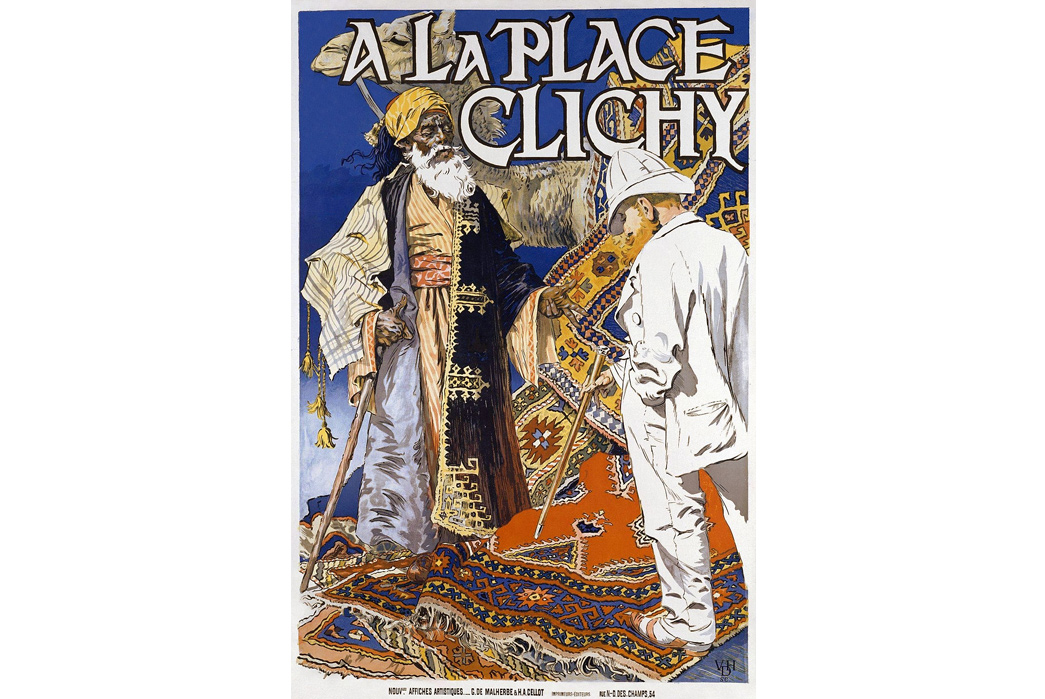
Advertisement for an 1891 Oriental rug exhibition. Image via Wikipedia.
In order to afford the purchase and restoration, the museum had to raise public funds from donors. This created a public buzz about how expensive these rugs were. As has always been the case, ultra-rare and expensive items caught the attention of the rich and powerful. Soon the British aristocracy and industrial magnates were accumulating Persian rug collections of their own. By the turn of the twentieth century, they were firmly established as must-have decor for the British upper class.
Persian rugs caught on in America during the 1920s as the economy boomed and many Americans who found themselves with expendable cash looked across the Atlantic for ways to spend it. A couple of exhibitions in 1922, one in Chicago and another in Detroit, as well as another in Chicago in 1926, brought an ample supply and buzz for Persian rugs. Then the Great Depression came along and burst the carpet bubble. As so many people lost most or all of their money in America and Europe, the demand for and price of Persian rugs essentially bottomed out.
The Rock and Roll Revival
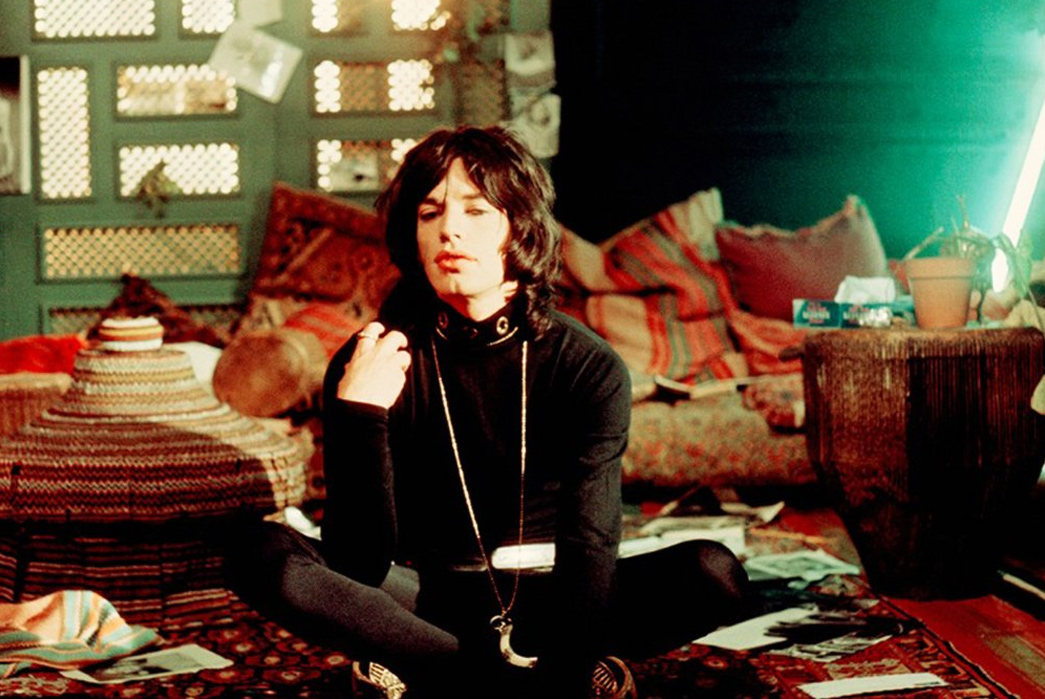
Mick Jagger in the 1970 film Performance. Image via Warner Bros.
You can thank rock and roll for making Persian rugs objectively cool in the 1960s. It all began around 1966 when paisley became arguably the most fashionable fabric in London. Paisley was a part of European fashion for centuries but it originally came from the Middle East. Soon after the pattern took over clothing, it became a staple of interior decorating. There were all these old Persian rugs laying around England, remnants of the long-faded excess of the Victorian age. The Depression and The War saw fortunes scattered to the wind and all these ornate exotic carpets went with them.
These formerly exorbitant expensive status symbols could be picked up at second-hand shops for next to nothing. The elaborately colored floral and paisley patterns drew the attention of London’s fashionable youth. Used Persian rugs became common floor covering for the flats and recording studios of the world’s newest tastemakers. As British Rock invaded the rest of the world, they took their carpets with them, frequently using them on stage.
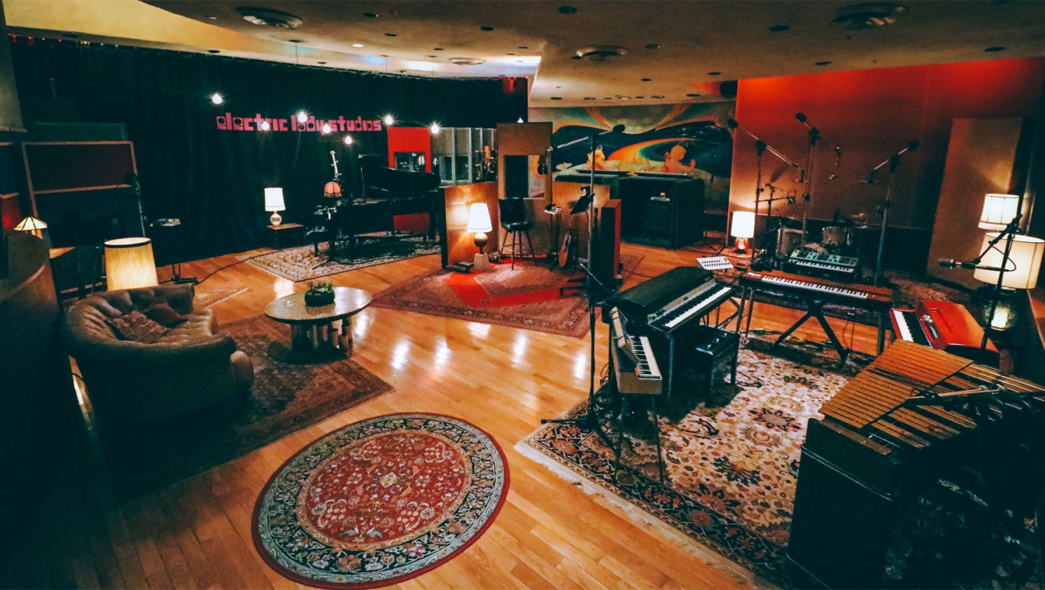
Electric Lady Studio in New York City, created by Jimi Hendrix and maintaining his decor to this day. Image via Washington Square News.
A taste for Persian rugs has stuck with rock musicians ever since. From the 1970s till today, they’ve accented the floors of dingy rehearsal spaces and stadium stages alike. You would be hard-pressed to find a decent recording studio anywhere in the United States or the UK that does not have them strewn across the floors. It has remained a unifying force across the history of the genre as strong as bar chords and cheap whiskey.
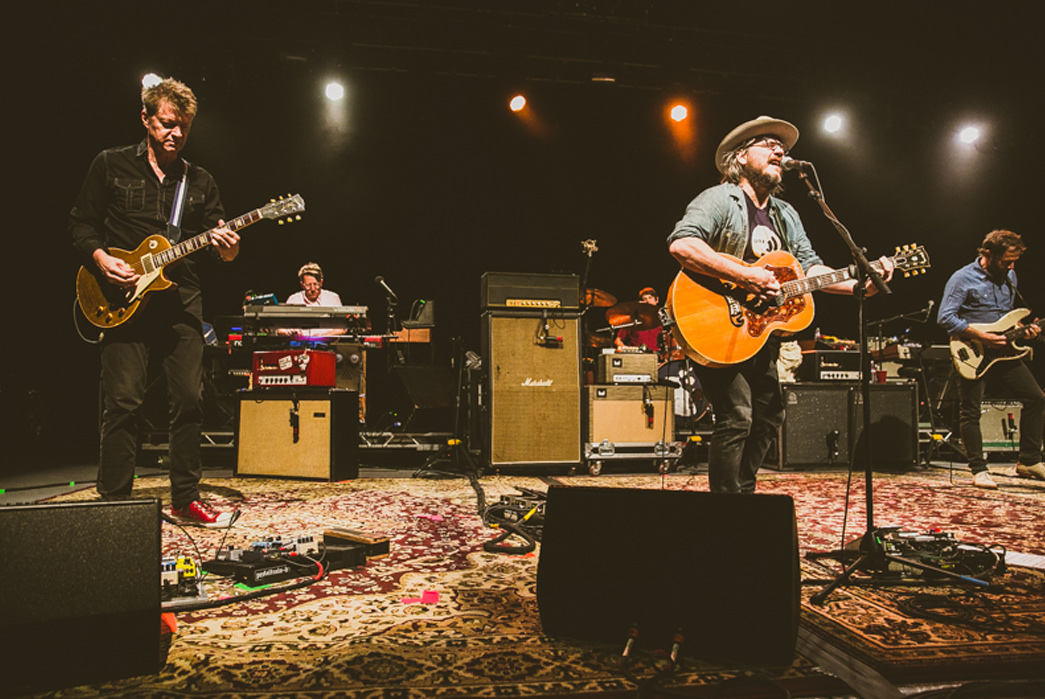
Wilco performing live in 2015. Image via L.A. Record.
Rock and roll has always been a fundamental influence on all forms of popular style. If rock stars do it then it is cool and if they keep doing it for generations then it will always be cool. So naturally, it didn’t take long for Persian rugs to permeate into the decorating habits of trendy and stylish people around the world. The remarkable thing is that they completely transcend all interior design categories. No matter which aesthetic choice the decor of your living space adheres to, a few Persian rugs will always fit in. They’re always cool.
The Rug of the People
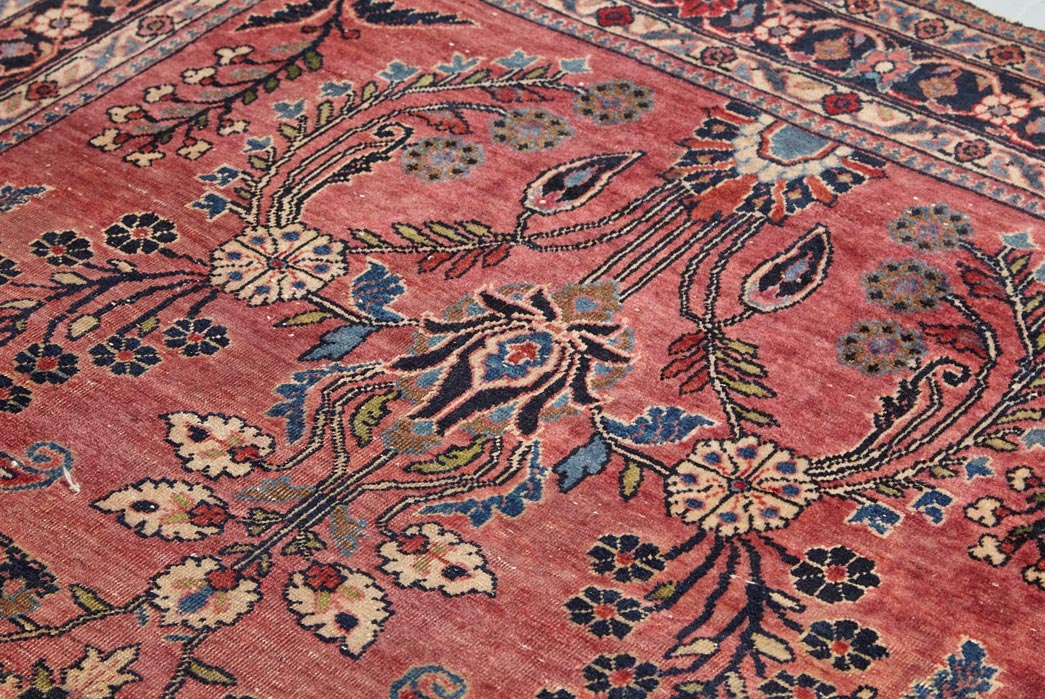
Detail of a vintage rug from King Kennedy. Image via King Kennedy.
Unlimited versatility is the attribute that has made Persian rugs so successful in modern interior design. This versatility comes from a combination of rich history and a broad styling range. Persian rugs have transcended all cultural and geographic borders throughout their storied history, but their roots should always be respected. They began as a cultural tradition of common people throughout the Arab world with uses both functional and decorative. Even though elaborate production systems turned them into enormous works of art in the 1400s, before exporting them to the rest of the world as status symbols for the wealthy, that original purpose was never lost.
Persian rugs have risen and fallen through the social ranks and permeated every international border over the past five centuries. In that time, they have become one of the very few decorative items that pretty much the entire world can agree upon. The secret to this remarkable success is that these rugs really are works of art. All that history and heritage has served to make Persian rugs universally known but the reason people everywhere choose them to decorate their homes and businesses is that they’re simply pleasing to look at.
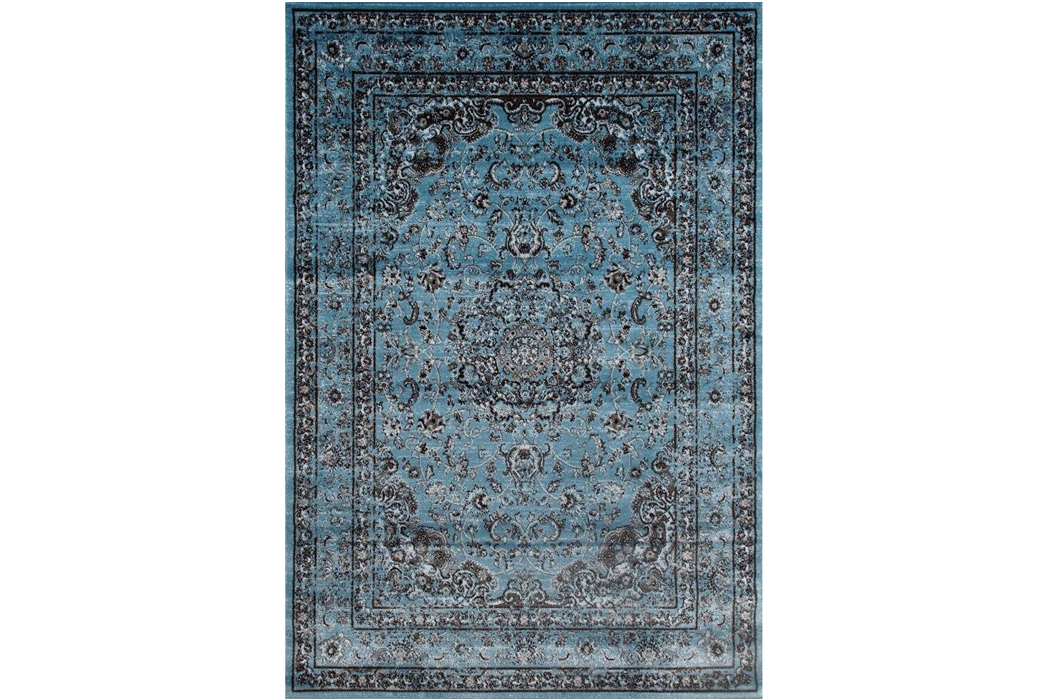
An example of a modern, mass-produced Persian rug. Image via Overstock.
Today, there are essentially two supply streams of Persian rugs, allowing for availability at pretty much any price range. Very old vintage rugs and new (or relatively new) ones that are made with traditional weaving methods go for thousands and even tens of thousands of dollars. These rugs still function as status symbols for the wealthy people who can afford them. For the rest of us, an abundant supply of rugs (both new and used) exist at affordable prices. They may not be as expertly constructed – usually woven by a machine rather than by hand — but the aesthetic result is the same to the untrained eye.
The other key difference between the construction of contemporary Persian rugs and heritage construction is the use of artificial fabrics/dyes. If you go to a hardware warehouse or a discount home decor store, you will probably find plenty of Persian-style rugs but they will almost all contain artificial polyester-based fabrics. This isn’t necessarily a bad thing. Aside from the fact that it significantly cuts down the price, these materials are much more durable than the wools and especially silks that were used for centuries. Stains clean up easier, colors won’t fade, and they can stand up to far more wear and tear.
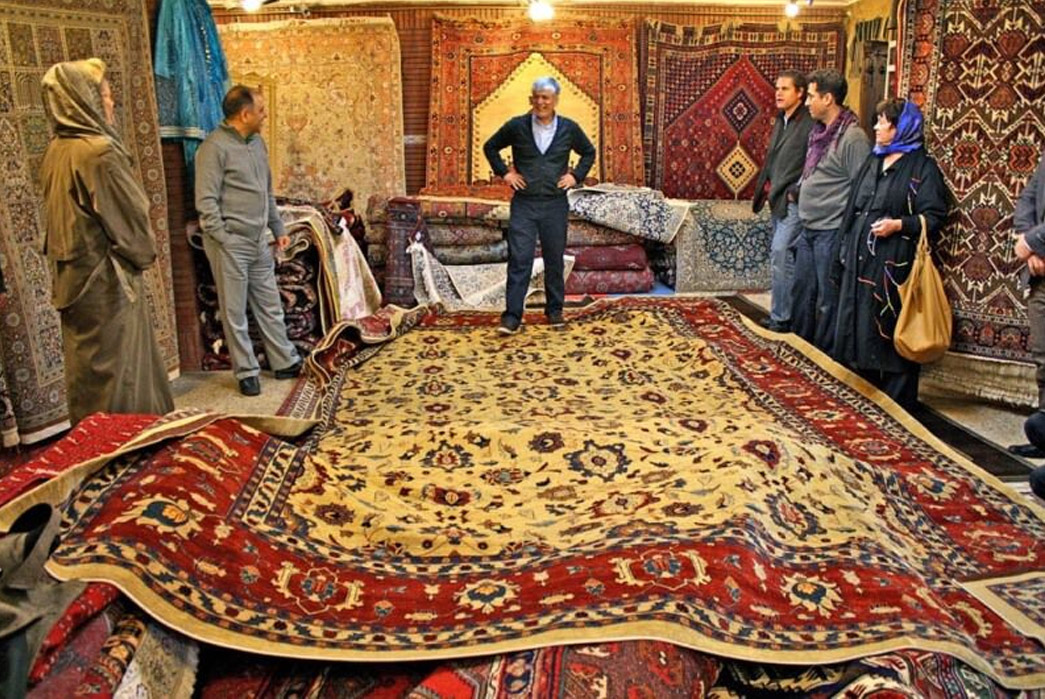
An Iranian carpet market where heritage-style rugs are still traded today. Image via Origian.
For those interested in the real thing, authentic Persian rugs are still produced in Iran using centuries-old weaving techniques. After the United States Federal Government lifted a trade ban with Iran in 2016, fresh rugs from the greatest source in the world were able to flow back into the American market. They often run in the thousands of dollars range, but for those who can afford it, you can’t find a better new Persian rug from anywhere else.
Treadable Art
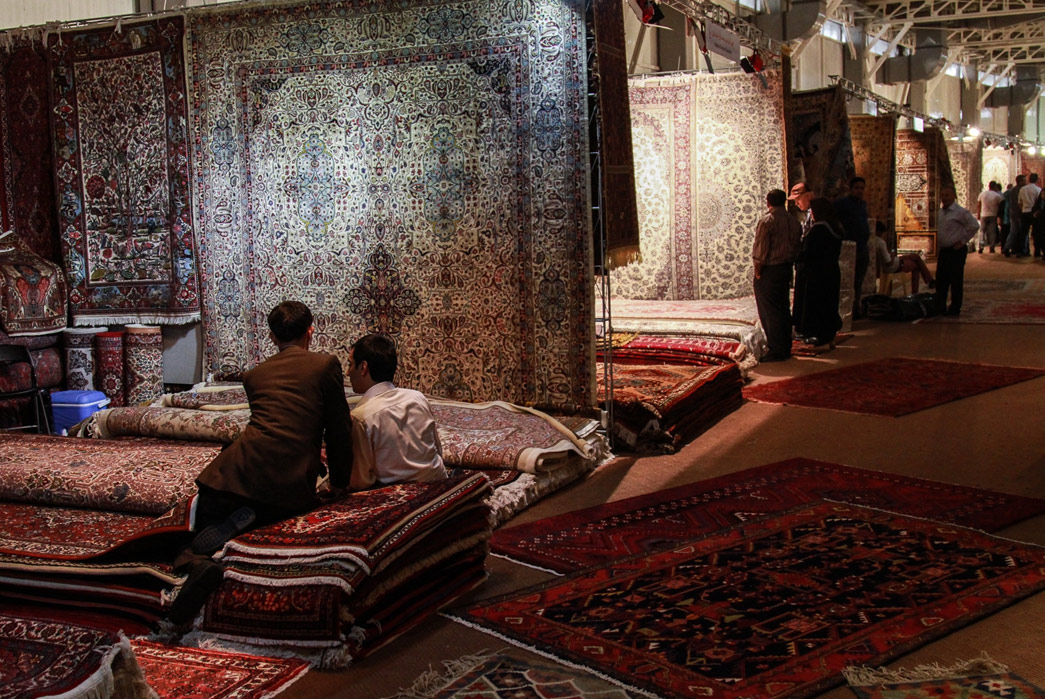
An Iranian rug market. Image via Aljazeera.
Most people who choose to decorate with Persian rugs, or even just like to look at them, are unaware of their origin or how exactly they came to be everywhere. All they know is that they look good, match pretty much everything, and somehow look better the older and more beat up they get. Ultimately, that is all that matters. The essence of art is finding joy; if something captures your attention, makes you feel something, or just pleases you – then it is art.
Those Persian rugs hanging in the Metropolitan Museum of Art were handmade centuries ago using silk and precious metals. Brilliant artists designed them before an elaborate system of expert artisans brought those designs to life over half a millennium ago. Yet you can go to a second-hand decor store or an infinite number of home goods websites and find a rug that will consume your attention while simultaneously fading into the background of your home. That is the secret to the success of Persian rugs, they’re treadbale art that fit snugly into our daily lives.
Where to Buy Persian Rugs Today
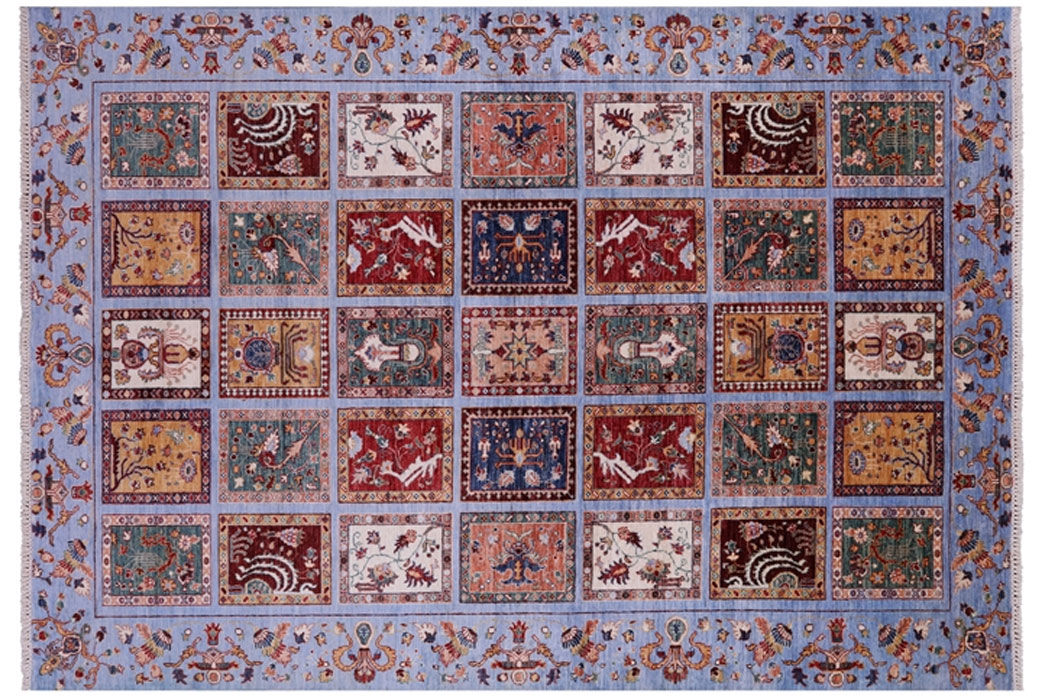
A quilted-style Persian rug. Image via Manhattan Rugs.
King Kennedy

Image via Collosal
King Kennedy has built a reputation as the rug guy. He built up an impressive social media following by displaying his inventive repurposing of rug fragments into shoes, bags, and faux bulletproof vests. He even upholstered the interior – including the trunk – of his vintage Mercedes with Persian rugs.
Nazmmiyal
The Persian Empire may not exist anymore but its heritage lives on in the people of Iran. The finest Persian rugs in the world are still handmade in the same area where they were invented over five hundred years ago. Nazmiyal is one of the best sites on the internet to find authentic Iranian craftsmanship right from the source.
1st Dibs
If you don’t feel like putting the time in on eBay to find top-quality vintage furnishings, 1stDibs is the place to go. They do the leg work for you by curating top-shelf home decor. It is one of the best sources for vintage Persian rugs at affordable prices on the internet.
Manhattan Rugs
Manhattan Rugs imports hand-crafted carpets from all over the world. Their selection of Persian rugs is impressive, both new and vintage. Their price range and variety has something for everyone.
One Kings Lane
If you have a little cash to drop on home furnishings then One Kings Lane is a great place to splurge. Their rug assortment is vast and goes way beyond Persian rugs. They range from totally affordable to aspirationally expensive. So just remember, like with any art, the price doesn’t matter as long as you like to look at it and can afford it.

